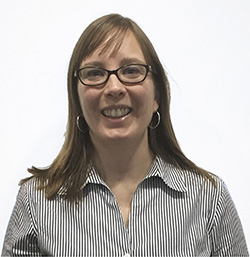For Research Use Only. Not for use in diagnostic procedures.
© Copyright 2016 by Pacific Biosciences of California, Inc. All rights reserved.
1380 Willow Rd., Menlo Park, CA 94025 | Legal & Trademarks

Join us October 18-22 at ASHG 2016 in Vancouver, Canada and find out how Single Molecule, Real-Time (SMRT) Sequencing can help advance your research by providing full access to human genomic variation through unmatched read lengths, uniform coverage, and exceptional accuracy.
There are many ways to engage with us pre-ASHG, and while at the show, and we really look forward to meeting you. Not able to attend ASHG? Then make sure to register for our pre-show webinar hosted with Nature and sign-up to watch the live stream of our ASHG workshop, right from where you are.

Going to ASHG?
Not going to ASHG?
| Wednesday, October 19 | |
|---|---|
| 1:00 - 4:00 p.m. Room 17, East Building |
Satellite Workshop: Getting the Most from the Reference Assembly and Reference Materials: Updates and Developments from the Genome Reference Consortium (GRC) and Genome in a Bottle (GIAB) |
| Thursday, October 20 | |
|---|---|
| 7:15 - 8:45 a.m. Ballroom A, East Building |
Interactive Invited Workshop: Introduction to the Integrative Genomics Viewer (IGV) |
| 12:45 - 1:00 p.m. Room 207, West Building |
Platform Presentation #164: Combined Next Generation Sequencing Techniques Untangle the Genomic Structure of Complex Nonrecurrent Deletions in Subjects with Smith-Magenis Syndrome and Reveal a Strong Bias to Paternally Deleted Chromosomes Claudia Fonseca, Baylor College of Medicine |
| 2:00 - 3:00 p.m. | Poster # 1397: A Method for the Identification of Variants in Alzheimer’s Disease Candidate Genes and Transcripts using Hybridization Capture Combined with Long-read Sequencing Steve Kujawa, PacBio Poster # 1727: Validation of a Novel, High-throughput HLA-I Genotyping Method Based on Phased, Full-length Sequencing Raveena Chhibber, Emory University Poster #1775: Structural Variant Calling Combining Illumina and Low-coverage PacBio Andrew Carroll, DNAnexus Poster #2177: Functional Modeling of Bainbridge-Ropers Syndrome (BRS) Mutations Suggests a Dominant-negative Mechanism of Pathogenesis Harikiran Nistala, Regeneron Genetics Center Poster #3323: Alternative Splicing in FMR1 Premutation Carriers Flora Tassone, MIND Institute, UC Davis Poster # 3395: Genome Assembly and Full-length Transcript Profiling of Stem Cells from Great Apes Jason Underwood, PacBio |
| 3:00 - 4:00 p.m. | Poster #698: Haplotype Phasing of Key Cardiac Disease Genes at Genome and Transcriptome Levels using Long-read Sequencing Technologies Alexandra Dainis, Stanford University Poster #1040: The MHC Diversity in Africa Project (MDAP) Pilot - 125 African High Resolution HLA Types from 5 Populations Martin Pollard, Wellcome Trust Sanger Institute Poster #1082: Large Protein-coding Polymorphisms in the Human Genome Stuart Cantsilieris, University of Washington School of Medicine Poster #1922: Phased Human Genome Assemblies with Single-molecule Real-time Sequencing Chen-Shan (Jason) Chin, PacBio Poster #1934: A Versatile Simulator for Simulating and Characterizing Third-generation Sequencing Technologies Bayo Lau, Roche Sequencing Poster #3206: Effect of Coverage Depth and Haplotype Phasing on Structural Variant Detection in Human Genomes from PacBio Long Reads Aaron Wenger, PacBio |
While the power of whole human genome sequencing to fuel discovery is unparalleled, for some scientific questions targeted long-read sequencing can provide higher resolution of genetic variation at a lower cost. Pairing long-fragment target capture with long-read SMRT® Sequencing provides an economical way to sequence candidate genes, full-length gene transcripts or larger genomic regions of interest. Benefits of a long-read targeted sequencing approach include improved coverage, increased structural variant (SV) discovery, resolution of break-points associated with copy-number variation, and phasing of multi-kilobase fragments to resolve allele haplotypes.
Join us to learn how different targeted-enrichment methods paired with long-read sequencing have uncovered hidden genetic variation in a variety of genetic and genomic disorders.
Tetsuo Ashizawa, Director of the Neuroscience Research Program at Houston Methodist Research Institute, will present a novel amplification-free targeted enrichment method using CRISPR-Cas9 for the disease-causing repeat expansion in SCA10. Using long-read sequencing, he has been able to span multi-kilobase repetitive regions and identify interruption sequence motifs that correlate with alternative clinical phenotypes in individuals from varying ethnic backgrounds.
Melissa Laird Smith from Icahn Institute at Mt. Sinai will review her work studying the genetic background of immune response by characterizing population diversity at the immunoglobulin heavy chain locus.
Meredith Ashby, from PacBio, will present how large-insert targeted sequencing (LITS) provides a more comprehensive picture of structural variation relevant to human disease and genomic disorders, providing insights into possible rearrangement mechanisms in Potocki-Lupski syndrome and revealing subtleties in cancer biology.
Speakers:

Towards Precision Medicine
Euan Ashley FRCP, DPhil, Director, Center for Inherited Cardiovascular Disease, Co-Director, Clinical Genomics, Stanford University

A Future of High-Quality Genomes, Transcriptomes & Epigenomes
Jonas Korlach, Ph.D., Chief Scientific Officer, PacBio
Identification and Characterization of Informative Genetic Structural Variants for Neurodegenerative Diseases
Michael Lutz, Ph.D., Assistant Professor, Department of Medicine, Division of Neurology, Bryan Alzheimer's Disease Research Center, Duke University Medical Center
All posters are on display in Exhibit Hall B, West Building
| Friday, October 21 | |
|---|---|
| 2:00 - 3:00 p.m. | Poster #3177: Target Enrichment using a Neurology Panel for 12 Barcoded Genomic DNA Samples on the PacBio SMRT Sequencing Platform Kevin Eng, Pacific Biosciences Poster # 3183: Unprecedented Characterization of a Human Trio for New Genomic Reference Materials Justin Zook, National Institute of Standards and Technology |
| 3:00 - 4:00 p.m. | Poster #1752: Haplotype Resolved SV Assembly: Producing Gold-standard SV Calls on Diploid Genomes using PacBio and 10X Sequencing Data Oscar Rodriguez, Icahn School of Medicine at Mount Sinai Poster #1914: Expanding and Improving the 1000 Genomes Project Data Resources in the International Genome Sample Resource (IGSR) Susan Fairley, EMBL-EBI Poster #3138: Characterizing Haplotype Diversity at the Immunoglobulin Heavy Chain Locus Across Human Populations using Novel Long-read Sequencing and Assembly Approaches Corey Watson, University of Louisville School of Medicine Poster #3324: Single Molecule, Real-Time (SMRT) Sequencing of Expanded Spinocerebellar Ataxia Type 10 (SCA10) Pentanucleotide Repeat Alleles Directly from Genomic DNA Tetsuo Ashizawa, Houston Methodist Research Institute Poster #3348: De Novo Sequence and Assembly of the Human Primary Cell Line WI-38 Genome Margaret Roy, Calico Life Sciences LLC Poster #3384: Discovery and Annotation of Duplicate Genes using Long-read Capture and Transcript Assembly Max Dougherty, University of Washington Poster 996: “SMRTer Confirmation”: Scalable Clinical Read-through Variant Confirmation using the Pacific Biosciences SMRT® Sequencing Platform Sarah McCalmon, Invitae Corporation |
Stop by our booth and chat directly with PacBio staff who will be on-hand to answer your questions and share insights.
Hours:
Wednesday, October 19: 10:00 a.m. – 4:00 p.m.
Thursday, October 20: 10:00 a.m. – 4:00 p.m.
Friday, October 21: 10:00 a.m. – 4:15 p.m
Discovering and Targeting Causative Variation Underlying Human Genetic Disease Using SMRT Sequencing
Register to attend or to watch the live stream of our workshop and discover how having access to previously hidden structural variants and SNVs unique to a population, disease, or individual will increase our understanding of genetic diversity and open new frontiers to explore human health and disease.
Date and Time: Thursday, October 20, 1:00-2:30 p.m. PDT
Location: Pan Pacific Vancouver Hotel, Crystal Pavilion (connected to the Vancouver Convention Center)
Speakers:
Reveal Hidden Genetic Variation by Combining Long-Read Target Capture with SMRT Sequencing
HX1 Iso-Seq Data Revealed Novel Genes; CRC Project Revealed Potential Biomarkers for Early Stage Cancer Screening
Meredith Ashby, Ph.D., Senior Scientist, PacBio
CRISPR-Cas9-Targeted SMRT Sequencing of Large Pentanucleotide Repeats of Spinocerebellar Ataxia Type 10
Tetsuo Ashizawa, M.D., Director, Neuroscience Research Program, Vice Chair of Research, Department of Neurology, Houston Methodist Research Institute and Neurological Institute


| Wednesday, October 19 | |
|---|---|
| 12:00 - 12:30 p.m. | Concurrent Invited Session I: Mechanisms of Rearrangements in Genomic Disorders: From the Bedside to the Bench Side Christine R. Beck, Baylor College of Medicine |
| 2:00 - 3:00 p.m. | Poster #1081: Assessing the Value of Population Specific Reference Genomes by the ‘1000 Swedes Project’ Adam Ameur, SciLifeLab, Uppsala University Poster #2305: Somatic Mosaicism of an Intragenic Duplication in X-linked FANCB Observed in a Fanconi Anemia Patient and his Mother, Leads to an Unusual Phenotype Settara Chandrasekharappa, National Institutes of Health Poster #3043: Development of Korean Genome Reference Material Jina Kim, Seoul National University Poster #3145: Characterization of the Poly-T Variants in the TOMM40 Gene using PacBio Long Reads Anand Sethuraman, PacBio Poster #3319: De Novo Assembly and RNA-seq Shows Season-dependent Expression and Editing in Black Bear Kidneys Anuj Srivastava, The Jackson Laboratory |
| 3:00 - 4:00 p.m. | Poster #1690: SMRT Sequencing of STR Expansions in SCA31 Brain Disease Wei Qu, The University of Tokyo Poster # 2458: Enrichment of Unamplified DNA and Long-read SMRT Sequencing to Unlock Repeat Expansion Disorders Jenny Ekholm, PacBio Poster #2626: Second-site Mutations in a Patient with KID Syndrome Cause Reversion of the Dominant Mutation p.D50N in GJB2 by Inhibition of Gap Junction Channels Formation Sanna Gudmundsson, Immunology, Genetics and Pathology, Uppsala University |
| Saturday, October 22 | |
|---|---|
| 9:45 - 10:00 a.m. Room 119, West Building |
Platform Presentation #266: Improving Gene Annotation to Facilitate Identification of Missing Variants of Clinical Significance Adam Frankish, Wellcome Trust Sanger Institute |


SMRT Sequencing as a Translational Research Tool to Investigate Germline, Somatic and Infectious Diseases
Melissa Laird Smith, Ph.D., Assistant Director of Technology Development, Icahn Institute for Genomics and Multiscale Biology, Department of Genetics and Genomics Sciences, Icahn School of Medicine at Mount Sinai
We are deeply saddened to hear of the passing of Dr. Allen Roses - a true pioneer in neurogenetics. Our thoughts are with his family and colleagues during this difficult time. We hope to honor Dr. Roses by sharing the most recent developments in his research on Alzheimer’s Disease and ALS, to which he was so dedicated.
Using Long-read Sequencing to Characterize Population Diversity at the Immunoglobulin Heavy Chain Locus
Melissa Laird Smith, Ph.D., Assistant Director of Technology Development
Icahn Institute for Genomics and Multiscale Biology at Mount Sinai, Department of Genetics and Genomics Sciences, Icahn School of Medicine at Mount Sinai, New York, NY



